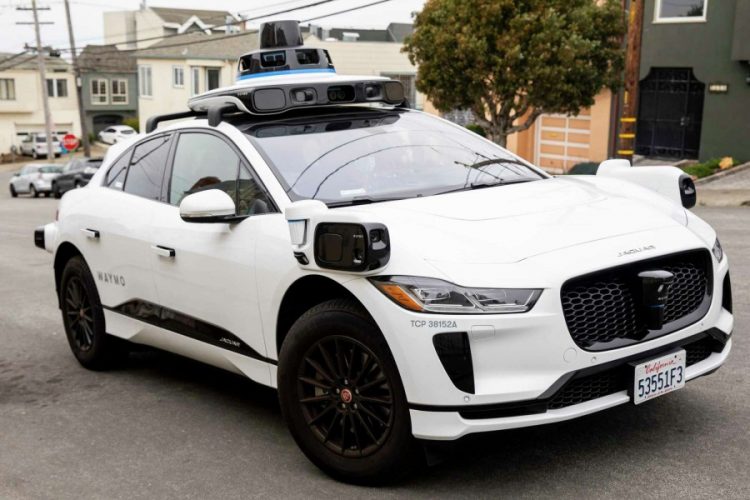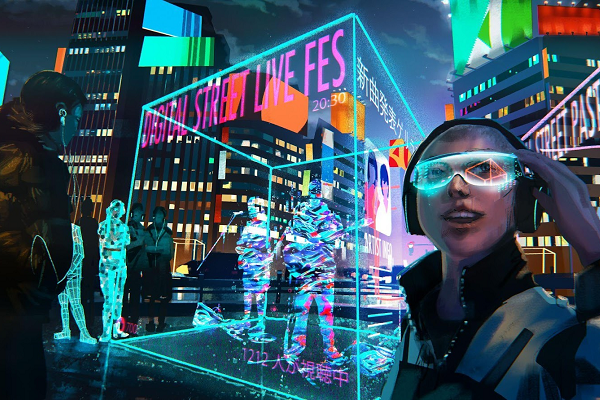The balance between positive and negative social impacts of tech: What Robotaxies in California can teach us!

With progress comes change, and with change comes winners and losers. Today we are seeing rapid change with technology – from robots to AI – changing the way we think, work and behave. But what is the real social impact of technology and how do we feel about the future?
We are living in an exciting period of rapid change and progress and everyone wants to embrace technology, but we are also living in a period where companies are being expected to be ethically responsible to both people and the planet.
Environmental, Social, and Governance (ESGs) are high up the agenda in most corporations, which leaves them with a few dilemmas – as they invest in new technologies, what is the environmental and social impact? And how do you measure it?
“The impact of technology on people, communities and the greater society is a complex issue, with both positive and negative aspects.”
Technology’s association with the environment is seen as largely positive, but when it comes to society, it’s a double-edged sword.
On the positive side, technology has the potential to drive social progress by improving accessibility, education, healthcare, and connectivity – it can connect people globally, enabling collaboration and knowledge sharing across borders, and creating rapid progress.
Technology can lead to more efficient resource management, reduced environmental impact, and innovative solutions to pressing challenges.
However, it can exacerbate inequalities by creating a digital divide between those with access to technology and those without.
Privacy concerns, cybersecurity risks, and the potential for criminals and terrorists to be more of a threat.
But the main concern is job displacement and the economic impact upon vulnerable communities, especially those with lower incomes.
While most companies are either managing to reduce their negative impact upon the planet or are offsetting it, how many are offsetting their social impact to improve their Social Values index?
The advent of the Third Industrial Revolution – a period of significant technological, economic, and societal change characterised by the widespread adoption of digital technologies – is upon us and no one will left untouched by it. The big question is, will it be a positive of negative one upon people, communities and society?
The World Economic Forum predicts that by 2025, 85 million jobs will be lost to technology, and while they confidently predict that 97 million new jobs will be created by technology (many doubt this), those jobs will not be filled by those who lost theirs.
Are people being over dramatic and paranoid?

The recent protests by writers and actors in Hollywood, against the use of AI to replace them, shows how seriously different professions are taking it.
Members of two unions, Writers Guild of America and SAG-AFTRA, are striking in protest against a number of decisions by major studios that include not just job cuts but also how generative AI tools could replace their roles in the industry.
Additionally, scanning actors and then owning the rights to reuse the image endlessly is seen as unethical.
On the positive side, AI is being used in many ways from de-aging actors to editing and retouching.
While some have accused actors and writers of being “over dramatic and paranoid,” others point to the fact that AI is highly attractive to the studios to reduce costs rather than to improve creativity.
What we can learn from robotaxis.
The three big players in America are GM’s Cruise, Alphabet’s (Google) Waymo and Amazon’s Zoox.
The recent trial of driverless taxis, aka ‘robotaxis’ or ‘autonomous cabs’, in California has raised some serious discussion about the positive and negative social impact of technology.

The first big question is, why do we even need robotaxis? What is the human benefit over the existing system? It’s obvious that big corporations see an economic advantage, but are they really looking at delivering a social one too?
The most concerning social impact is the loss of jobs, highlighted by most taxi driver unions, and lobbying groups. But you have to look beyond this to the chain reaction – loss of jobs means essential income to those who often live close to the poverty line, which can push them into poverty – which is an obvious negative social impact.
In parallel, each person who loses their income creates a knock-on effect upon their local community economy – less money to spend locally, which affects shops and services, which can lead to further job losses.
Additionally, it also creates economic pressure on local authorities as well.
Economists have pointed out that while currently your $20 taxi fare essentially helps to support a person, their family and inputs to the local economy, the robotaxis are owned by large corporations (Alphabet, GM, Amazon) who take the money out of the economy. This creates a highly charged People vs Profit debate.

The industry seeks to point out that self-driving vehicles reduces road deaths, but some say they are using statistics to compare apple and pears. According to a 2020 Annual Review of Public Health review… “Self-driving cars could increase health risks (such as air pollution, noise, and sedentarism). However, if properly regulated, AVs could reduce injuries and death from motor vehicle crashes”.
By contrast, poverty also comes with a health and well-being cost, including death.
What impact is technology having on society and workers?
Technology tends to pick off the low-level workers, the low-paid paid and those doing functional, process and manual jobs. No surprise that ‘AI Anxiety’ (AIA) – the fear of losing your job to a soulless computer programme – has become the new workplace anxiety.
• A third of all employees fear losing their job to AI over the next 3 years. In India it’s 74% of employees. [Survey of 52k employees over 44 countries by PwC]
• More women will lose more jobs than men. [Kenan Institute]
• 39% are concerned that their employer is not giving sufficient training in emerging technology skills. [PwC]
• By contrast, 81% of office workers think AI will improve their job performance. [SnapLogic]
• GenZ are the most concerned about AI, with 52% worried about how AI will impact their future careers.
• More dramatic than the World Economic Forum’s prediction, Goldman Sachs believes technology will replace 300 million full-time jobs globally.
• 77% of businesses are using or exploring AI. [IBM research] The key drivers – to save money and maximise efficiency.
Many unions fear that using AI to replace human workers will result in more pressure placed upon those still employed, drive down salaries and will lead to unfavourable severance deals. Looking back over the last few decades, AI, technology and automation have already driven down wages by up to 70% in some industries. [Business Insider, Forbes]
BT has announced plans to cut 10,000 staff over the next 7 years with help from AI and other technologies. IBM has already announced that it would freeze hiring for jobs that AI can do. IBM CEO Arvind Krishna said he believes that a third of jobs in IBM could be replaced by AI in the next five years. [Bloomberg].
• 47% of people think AI will be harmful to humanity, 36% think it would be beneficial, and 17% remain unsure. [ID Crypt Global]
Learning from the past.
Looking back in history, the Industrial Revolution had a dramatic impact on people, communities and society. Mills initially provided essential income to thousands of people, who had little alternative choices to earn a steady income. But the Industrial Revolution saw machines replace humans and drive down wages of those still in work.

The Luddite Revolution of 1811-13 saw groups vandalizing machinery, attacking and setting fire to factories, and even exchanging gunfire with company guards and soldiers. Mill owners were attacked, and even killed, by angry mobs of workers who lost their jobs to the new technology of the time.
In 1830 unrest grew among agricultural workers and the Swing Riots sought to resist the mechanisation of agriculture.
In time, society and business settled into a new course that has actually benefitted society.
The overall conclusion is that while technology may create cost savings and even greater profit, it can come at a real social cost. As part of their ESGs companies need to address this impact and offset any negative impact, in the same way they do against their negative environmental impact.
Companies like Alphabet, Amazon and GM (and other players) need to make sure that the relationship between technology and society needs to be balanced – a give and take approach. To develop intelligent, even creative, strategies that support communities, not token gestures.
To measure their Social Impact and Social Values.
Progress is inevitable, you can’t ignore the impact of technology or try and live in the past, but with it comes responsibility, though ultimately, the impact of technology on society will depend on how it is harnessed. Responsible innovation, robust regulations, and a commitment to inclusivity are essential to ensure technology’s positive social outcomes.
Companies and policymakers must consider the broader social implications of their technological initiatives and work collaboratively to address the negative aspects while maximising the positive potential.
“Balancing technological advancement with ethical considerations will be key in shaping a future where technology enhances society’s well-being for all.”
While alarmists and the media, seeking a sensational headline, talk about AI wiping out mankind, it’s actually mankind that is responsible not technology.
Inevitably, technology is going to be the challenge of People vs Politics and Profits, the successful outcome is a win win for all.
………………………………………………………………………………………………………………..
If you wish to discuss how you can improve and measure your Social Impact and Social Values, and even offset any negative Social Impact, message me.
Check out this post on Social Impact and measuring Social Values:
https://www.linkedin.com/feed/update/urn:li:activity:7064619402956042241
………………………………………………………………………………………………………………..
Dr Chris Arnold is a Dr of Business, a marketing and business consultant, author of Ethical Marketing and The New Consumer and a specialist in connecting brands with community, and helping brands create positive Social Impacts.
A former board director of Saatchi & Saatchi, he is founder of Creative Orchestra Advertising, CONNECT2 and Dyversity Lab.
#csr #esgs #sdgs #socialimpact #socialvalues #mysocialimpact #society #community #ai #artificialintelligence
[Note: Written by a human not by ChatGPT.]



